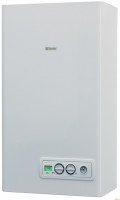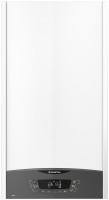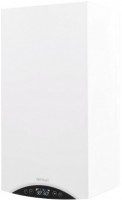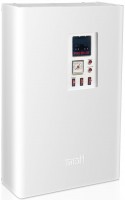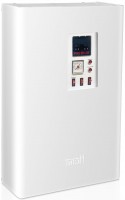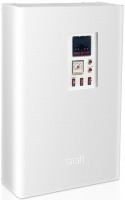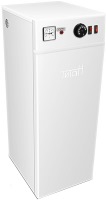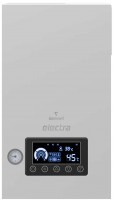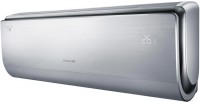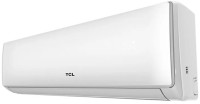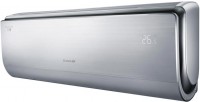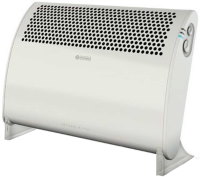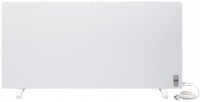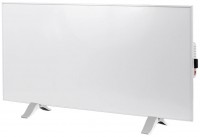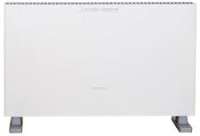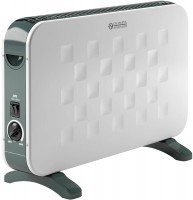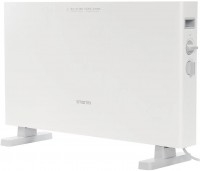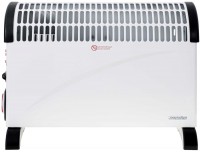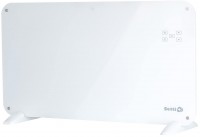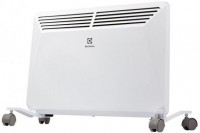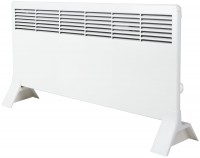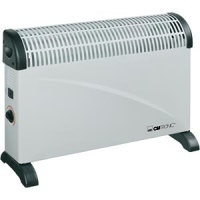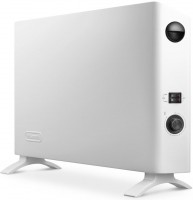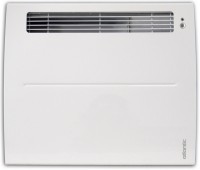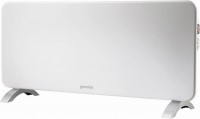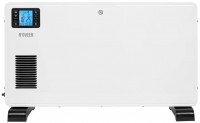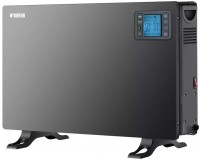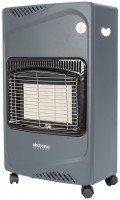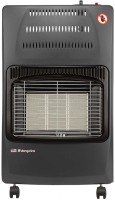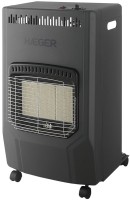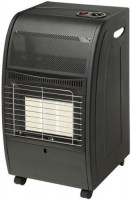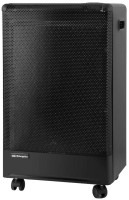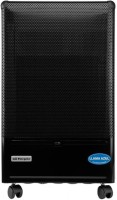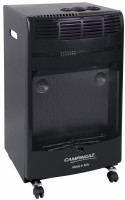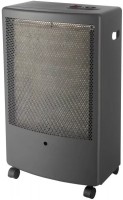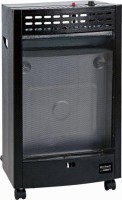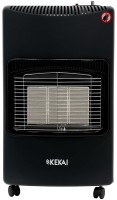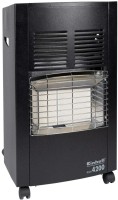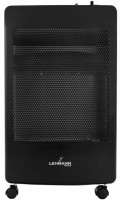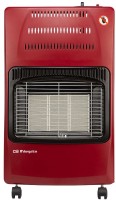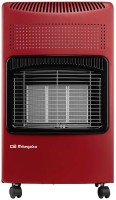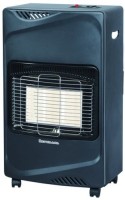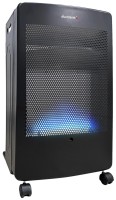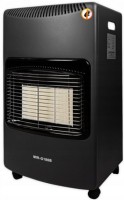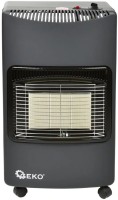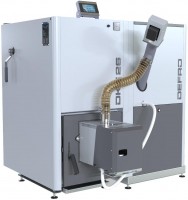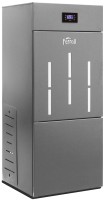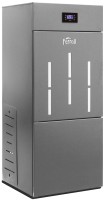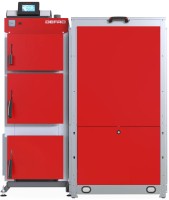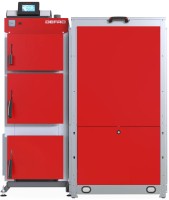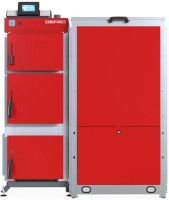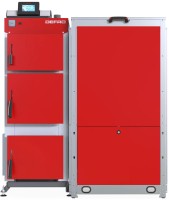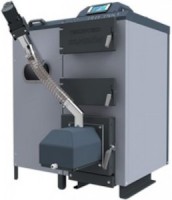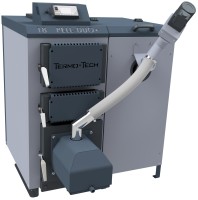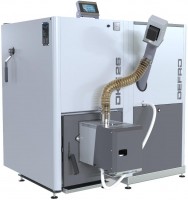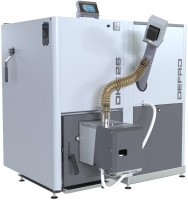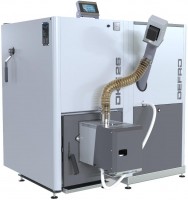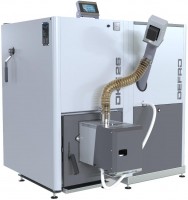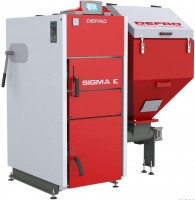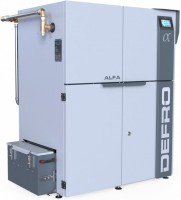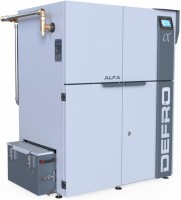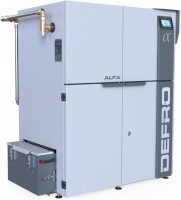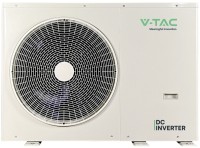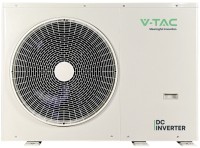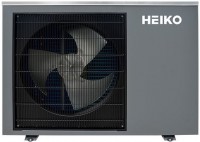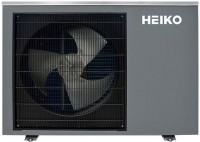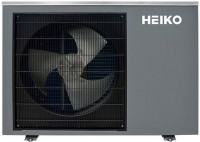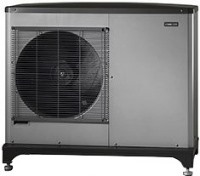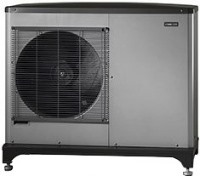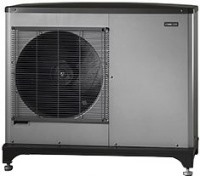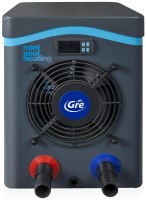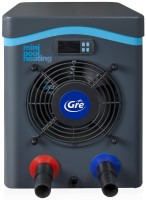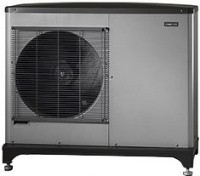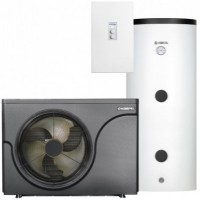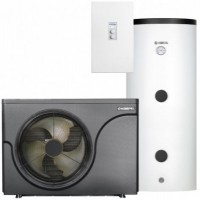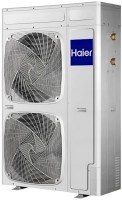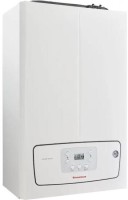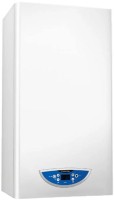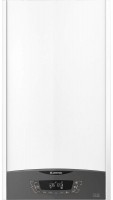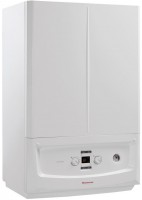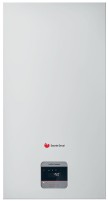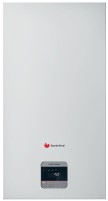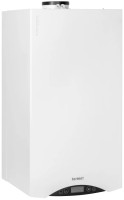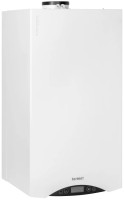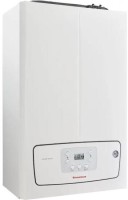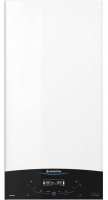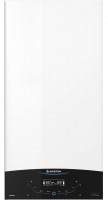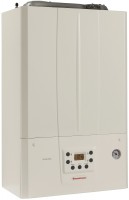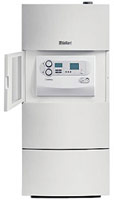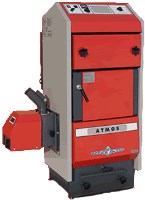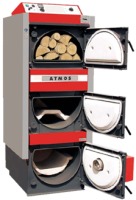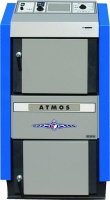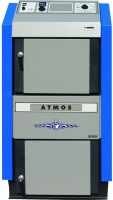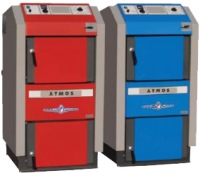Which heating source is more profitable and convenient?
Niezależnie testujemy rekomendowane przez nas produkty i technologie.

1. Central heating
It is quite difficult for residents of apartment buildings and all tech connected to the centralized heating system to consider alternatives. Thus, the decision to switch, for example, to gas heating (if it is connected to the "multi-story building") or electricity, must be made by the owners of each apartment. And even if the entire building is ready, a complex bureaucratic procedure lies ahead and only then the difficult technical implementation of an alternative system. In such a situation, conversations about which heating is better, more profitable, more convenient are not entirely appropriate.
The essence of the centralized system (CS) is to receive heat from specialized supplier companies (usually utility companies). The latter are responsible for heat and power plants and boiler houses, as well as the necessary communications - heating mains, through which heated water is supplied to a residential building. Given the not very good condition of this infrastructure, heat losses in the CS are high, and accordingly, the efficiency factor (EFF) is steadily falling.
Centralized heating also has other disadvantages:
- Work only during the heating season according to the generally accepted schedule.
- There are no flexible adjustments. Sometimes, even in warm April, they heat as if it were cold February.
- Risk of power outages during the cold season - due to accidents, problems with electricity supply, gas supplies, etc.
- Not always highly efficient: barely warm batteries with hefty bills.
- Strict regulations for CS equipment.
The layout of intra-apartment pipes and the installation of radiators is a job well known to most plumbers (and not only). Also, this system does not require the placement of boilers or similar equipment in the apartment. Plus, the maintenance process is usually limited to elementary measures against airing once a year.
Centralized heating is still relatively inexpensive, so the heat losses that fall on the consumer's shoulders do not seem critical. But there is a general trend towards increasing tariffs, as well as the ongoing physical deterioration of the infrastructure of public utilities. Therefore, in the near future, central heating without serious modernization programs will lose the competition to alternative heating solutions. This has already happened in many villages, towns and small cities, but it may also affect regional centers.
2. Heating with a gas boiler
The most popular alternative to centralized heating in Ukraine is individual systems based on gas boilers. Projects for gasification of the private sector and new buildings, approval and installation procedures are well-established and often even digitalized, that is, it is not difficult to legalize such a system. However, it should not be forgotten that gas is supplied by monopolists, which means that the consumer is directly dependent on them. This applies to both the stability of gas supply and changes in tariffs.
The principle of operation of a classic individual gas heating system is quite simple. The coolant is water. It is heated by the boiler and supplied through pipes to the radiators. For uniform distribution of the coolant along the circuit, circulation pumps are also needed, although they can be built into the boiler.
The cost of basic equipment (for an area of about 80 m², excluding wiring, radiators, etc.) — from $300.
Efficiency of gas heating: high, the efficiency of condensing boilers can reach 120%, and conventional ones - about 100%.
Dependence on electricity: average. The boiler controls and circulation pump operate on electricity. But the consumption figures are quite limited - about 120 W. True, starting currents are usually about 5 times higher. It turns out that medium-power (about 700 W) charging stations or UPS are suitable for backup power supply of such a system.
Heating costs for gas (operating costs): the lowest among all alternative systems.
Advantages of heating with a gas boiler:
- High efficiency.
- Possibility of adjusting the heating intensity taking into account weather conditions.
- A large selection of boilers, including dual-circuit models that also provide hot water.
- Relatively simple installation (without taking into account the need for a coaxial chimney).
Disadvantages of gas heating:
- Dependence on the gas supplier. It is the supplier that determines the tariffs, fuel quality and continuity of supply.
- The need for supervision and protection.
- Reduced efficiency and cost effectiveness when using conventional low-quality boilers.
When/who is gas heating suitable for? This option can be recommended to almost all consumers who have a gas main. It is a profitable, effective and convenient way of heating.
3. Alternative heating options for apartments
The variability of heating housing in a multi-storey building is small. In old buildings in large cities, these are centralized systems. In new residential complexes, their own mini-boiler rooms operating on gas can be used, or individual boilers (often gas) can be installed in each apartment. There are few other alternatives, and they are available if the management company or the association of co-owners of an apartment building (OSMD) gives the go-ahead.
Electric boiler
Electric heating boilers are cheaper and work on the same principle as gas boilers, but the coolant is heated not by gas, but by a heating element. There are also dual-circuit models on sale that provide housing with hot water, etc.
The cost of basic equipment (for an area of about 80 m²) is from $150.
Heating efficiency with an electric boiler: average. Efficiency is about 90%.
Dependence on electricity: high. Plus power consumption figures can be higher than 10 kW.
Heating costs using an electric boiler: high.
Advantages of a system based on an electric boiler:
- Environmentally friendly and does not produce combustion products.
- Installation is easier than when working with gas - no chimney is needed.
- Flexible regulation of heating intensity.
- Wide automation options, including programmers or Wi-Fi control.
- Low cost of equipment.
Disadvantages of electric boilers:
- High power consumption and complexity of implementing backup power supply.
- High operating costs compared to gas.
- Increased load on the electrical network (especially with equipment for large areas).
When/who is electric boiler heating suitable for? In general, this heating method is quite universal, as it combines safety, eco-friendliness and does not require large expenses at the start. In a sense, electric boilers are suitable for all consumers whose homes do not have gas. But taking into account all the disadvantages, they are optimal for owners of small apartments. Here, energy consumption indicators, electricity bills and the load on the power grid will be moderate - comparable to using one or two heaters at once.
Electric heated floors
Electric underfloor heating is a relatively new low-temperature method of heating a home, which is rapidly gaining popularity. One of the key features of such systems is high comfort due to the correct distribution of energy. Thus, the feet quickly become warm, so the feeling of coldness quickly disappears even at relatively low heating temperatures. Modern electric underfloor heating is very versatile, because it can be placed under various floor coverings - tiles, stone, laminate (class E0 or E1 - recommended for residential premises), linoleum and even parquet or carpet.
The operating principle is simple: the heating element reaches temperatures of about 70 degrees Celsius (or lower), transfers heat to the floor covering, and then the air in the room gradually warms up.
The cost of basic equipment (for an area of about 80 m²) is from $800 to $1000.
Heating efficiency of electric underfloor heating: good. Efficiency is about 100%.
Dependence on electricity: high.
Heating costs: high.
Advantages of electric underfloor heating:
- Easier installation compared to any system with water as a heat carrier.
- Simple and convenient operation with flexible settings using a thermostat.
- No impact on the interior (relevant for small homes where it is difficult to “hide” a boiler or heater).
- Long service life (from 20 years).
- No drying out effect, which is typical for most electric air heaters.
Cons:
- Reduction of ceiling height (up to 8 cm in the case of systems requiring concrete screed).
- High power consumption.
- Costs are incurred both at the stage of purchasing the cable (mat) and during operation.
- It may not always serve as the main and only heating source.
When/who is electric underfloor heating suitable for? As an independent and self-sufficient heating system, this method can only be considered in an energy-efficient home. But electric underfloor heating is an excellent addition to the main heating and a good choice for small spaces, including bathrooms, glazed loggias or balconies, etc.
Air-to-air heat pump
Air-to-air heat pumps can be considered advanced versions of modern air conditioners. They are no different in appearance (external and internal units) and in their operating principle, but they are ready to work for heating at temperatures of -25 °C and below.
Heat pumps of this type work like this: the compressor of the external unit compresses cold freon, which heats up and enters the room, where it gives off its heat. In summer, they work in the opposite order - for cooling. In general, heat pumps often cannot provide uniform heat distribution throughout all rooms, so it is better to combine them with other electric heaters, including heated floors.

The cost of basic equipment (for an area of about 80 m²) is from $1000.
Heating efficiency of the air-to-air heat pump: very high. The efficiency is over 300%, i.e. for every 1 kW of electricity consumed we receive 3 kW of thermal energy.
Dependence on electricity: high. But the energy consumption of heat pumps is small due to inverter control.
Heating costs: average.
Advantages of an air-to-air heat pump:
- Very high efficiency.
- Environmentally friendly and safe.
- Flexible adjustment of heating intensity.
- The lowest energy consumption compared to other electric heating systems.
- Possibility of operation for cooling in summer.
- High reliability of equipment.
Cons:
- Relatively small selection of models.
- The need for professional installation (sometimes involving high-altitude work).
- They dry the air a lot.
- They cannot always serve as the main and only heating source.
When/who would benefit from air-to-air heat pump heating? In apartments (especially large ones), the use of this equipment may be almost the only profitable alternative to centralized systems or gas boilers (if there is no gas). High efficiency and excellent energy efficiency contribute to economical operation and reduce the overall load on the wiring. Plus, it can be used in tandem with underfloor heating or convectors. Such a system can 100% replace traditional types of heating.
Inverter split system
An inverter air conditioner, which is designed to operate at temperatures down to -15°C or so, can be an alternative to a heat pump. But it is important that it is a model with inverter control, otherwise the energy consumption figures will be much higher.
We will not consider heating with an air conditioner in detail, because the main advantages and disadvantages are almost the same as tech of heat pumps. A split system will cost a little less, but it will not be possible to use it during severe cold snaps. In general, they are slightly less effective when temperatures drop than heat pumps.
Electric heaters
Electric heaters today are quite variable. They differ in many criteria, but the transformation of electricity into heat remains unchanged. Our material “Which heater to choose: pros and cons, comparison of different types” will help you better understand the entire current variety of such devices.
The cost of the basic equipment (for an area of about 80 m²) is from $100 (this is the price for 3 heaters, designed for 25 – 30 m² each).
Efficiency of electric heaters: good. Efficiency is about 100%.
Dependence on electricity: high.
Heating costs: high.
Advantages of electric heaters:
- Affordable price.
- They do not require installation and are most often placed on the floor.
- Mobility. Can be moved to another home.
- Flexible regulation of heating intensity.
- A wide range of models.
- Environmentally friendly.
Cons:
- High wiring loads and operating costs.
- All devices, except oil radiators, dry the air greatly.
- They cannot serve as the main and only heating source.
- They do not always fit into the interior and require storage space during the warm season.
When/who are heaters suitable for? These devices are well suited as additional heat sources in addition to a central or individual heating system. In such a situation, heaters are very versatile and often compatible with other solutions.
Autonomous heaters on diesel or gas
There are a minimum of alternative heating options for apartments in case of critical force majeure, such as a blackout. Most electrical appliances have high consumption, so it is problematic to supply them with backup power. In the best-case scenario, they will be able to work for about an hour until the battery of the charging station, UPS or car inverter is discharged.
What alternatives are left? These are the so-called Webasto heaters, which run on diesel, or gas convectors, which can be connected to cylinders. You can read more about these solutions for force majeure in the article "How to survive a long blackout".

The cost of basic equipment (for an area of about 80 m²) is from $300.
Heating efficiency: good. Efficiency is about 100%.
Dependence on electricity: none or minimal (for electronics or ventilation).
Heating costs: low (for gas convectors), high (for diesel heaters).
Pros:
- Suitable for heating in the absence of light.
- Many devices are mobile.
- Diesel appliances can be very powerful.
Cons:
- Small selection.
- Safety risks + need for good ventilation.
- Inconvenient to operate.
- They don't fit well into residential interiors.
When/who are diesel autonomous heaters and gas convectors suitable for? These are narrow-profile solutions for providing heat in housing or other facilities in the absence of electricity. They should only be considered for critical situations, since operation is not very convenient, not always safe and environmentally friendly.
4. Alternative heating options for a private home
For private households, all the heating methods described above are also relevant. But there are other solutions, many of which are more profitable and/or more convenient. Plus, in a private house or cottage, it is easier to provide backup power supply, for example, with a generator - gasoline, diesel or gas. Accordingly, the same air conditioners or electric heaters will be able to "work" even during long blackouts.
Let us dwell in more detail on heating methods that are suitable primarily for private housing.
Solid fuel and diesel boilers
Solid fuel (SF) boilers for heating the coolant (water) use traditional types of fuel - coal, peat, firewood, pellets, etc. Many models are completely autonomous, which means that the lack of electricity is not an obstacle for heating systems based on them.
The cost of basic equipment (for an area of about 80 m²) is from $300.
Efficiency of solid fuel boilers: below average. Efficiency is 75 – 90%.
Dependence on electricity: no.
Heating costs: average for wood and pellets, high for coal.
Advantages of a solid fuel boiler:
- Suitable for heating in the absence of light.
- Versatility - usually works with different types of fuel.
- Relatively simple installation.
- A wide range of boilers.
Cons:
- High labor intensity of operation - loading fuel and unloading ash. The disadvantage is partly eliminated in long-burning boilers.
- Lack of ability to precisely adjust heating power.
- Double-circuit models are almost never found, so they do not provide hot water supply.
- Requires space for fuel - firewood, coal, briquettes, etc.
When/who are TT boilers suitable for? This is quite an interesting option for heating equipment in a private house in case of force majeure. With it, the customer does not depend on either gas or electricity. And if the gas main is connected, but interruptions are not excluded, then you can consider alternative combined boilers. They run on gas and solid fuel (at least coal).
The advantages of gas and solid fuel boilers are also combined with other devices - diesel ones. They allow convenient power regulation, reduce the overall labor intensity of operation, however, they are less common, are expensive and require high-quality exhaust.
Heat pumps for water heating
Heat pumps (HP) are the most progressive and energy-efficient heating systems, which can also be used for additional household needs - air cooling and hot water supply. Depending on the type of equipment, they can use the thermal energy of the air ( air-to-water systems) or the soil ( ground-to-water systems). In the first case, HP are optimal for creating low-temperature heating (for example, in tandem with heated floors) or for working as an auxiliary solution with other equipment (from radiators to solar collectors).

Ground-to-water heat pumps are generally more productive and efficient. They can act as the main (full-fledged) heating system. However, they require complex installation (with soil work) and the devices themselves are even more expensive.

Typically, such heat pumps are ideal for organizing water heating, i.e. they transfer thermal energy to water or other liquids. And it can circulate through radiators and/or underfloor heating pipes.
The cost of basic equipment (for an area of about 80 m²) is from $3000.
Heat pump efficiency: the highest. Efficiency usually exceeds 400%.
Dependence on electricity: high.
Heating costs: medium or low (due to high efficiency).
Advantages of heat pumps for water heating:
- The highest efficiency to date. For every 1 kW of electricity consumed, at least 4 kW of thermal energy is generated.
- Environmentally friendly.
- Wide compatibility with other heating equipment.
- High automation and flexible adjustment of heating intensity.
- Can provide hot water and air conditioning.
Cons:
- High cost of equipment.
- They are often not self-sufficient, meaning they require additional heating equipment.
- In severe frosts, efficiency decreases, and to be on the safe side in this case, devices can be equipped with additional heating elements, which increase the load on the wiring and overall energy dependence.
When/who are heat pumps suitable for? This equipment is for demanding users who are willing to pay extra for an advanced energy-efficient system. Investments in heat pumps pay for themselves with subsequent savings on heating, cooling and hot water supply. If large initial investments are not an obstacle, then this equipment can be considered the best alternative to gas heating in private homes.
Water heated floors
A water heated floor is an effective auxiliary heating solution that works in tandem with almost any boiler or heat pump. It will create the best and most economical combination with a heat pump, and gas boilers can be put in second place. Unlike traditional water systems with radiators, in this case the pipes are laid under the floor covering. Hot water moves along the circuit, heats the floor, and from it - the air in the room.

The cost of basic equipment (for an area of about 80 m²) is from $100 (for an electric boiler).
Efficiency: good. Efficiency is about 100%.
Dependence on electricity: only indirect (for basic equipment).
Heating costs: low.
Advantages of water heated floors:
- Low costs (compared to electric floors).
- Slow cooling.
- High level of reliability when installed correctly.
- Flexible regulation of heating intensity.
- No impact on the interior.
Cons:
- Labor-intensive installation and hiding of ceiling height.
- Serious costs in case of leakage.
- It may not always serve as the main and only heating source.
When/who is a water heated floor suitable for? This solution is perfectly combined with heat pumps (for example, "air-to-water"), gas and other types of boilers. Unlike traditional radiators, a heated floor does not dry the air. But as an independent system, they can only be used with high overall energy efficiency of housing. Otherwise, other heaters will also be needed, the same radiators or convectors, and in large rooms - fan coils.
Solar collectors
Solar collectors can be an addition to the main heating system in a private home. Such heliosystems are installed on the roofs of a private home or on the adjacent territory. Most of these solutions use solar energy to provide hot water supply for housing, but there are also devices for heating. Collectors can provide savings of up to 60% on water heating and up to 25% on heating.
The cost of basic equipment starts from $400.
Efficiency: below average (as a standalone solution). Efficiency is about 70%.
Dependence on electricity: no.
Heating costs: zero (solar energy is free).
Advantages of solar collectors:
- There are no costs during operation (the solar system gradually pays for itself).
- Compatibility with other types of water heating (and not only).
- Increasing overall energy independence.
Cons:
- High purchase costs + difficult installation.
- The need for a suitable installation location.
- Dependence of efficiency on weather conditions.
- Cannot act as primary heating.
When/who are solar collectors suitable for? Solar systems work best in private homes with a roof or territory where there are no obstacles for sunlight. Collectors should be considered as an investment in renewable energy sources. Thus, solar systems increase the energy independence of housing. Together with heat pumps, they will allow you to create an eco-friendly solution, provide the heat pump with an additional source of energy and further increase the efficiency of such a heating system.
Stoves or fireplace inserts
Another alternative to popular types of heating for a private home can be traditional stoves, fireplace inserts, two-chamber buleryans, etc.
The stoves consist of a firebox, an ash pan, and a chimney system. They most often run on wood. A fireplace insert is a metal structure (cast iron or steel) lined with heat-insulating material, a door for access to the working chamber, and an opening for the removal of combustion products. Fireplaces of this type can use not only wood, but also coal, pellets, and other fuels.
These traditional heaters are inferior in efficiency to boilers and other modern systems, require complex installation and are often quite expensive. At the same time, they can be a stylish element of the interior and emphasize the retro design.
The cost of basic equipment starts from $300.
Efficiency: below average. Efficiency is usually up to 80%.
Dependence on electricity: no.
Heating costs: average for wood and pellets, high for coal.
Advantages of traditional stoves and fireplaces:
- Suitable for heating in the absence of light.
- Quite a large assortment.
- Spectacular appearance (especially for fireplaces).
Cons:
- Not the easiest installation (best done at the construction or major renovation stage).
- Labor-intensive operation - it is necessary to load fuel and unload ash.
- There is no heating power adjustment.
- Low efficiency of the simplest furnaces.
- Safety risks (if handled improperly).
When/who are stoves and fireplaces suitable for? This type of heating does not depend on either electricity or gas. It is a more vintage and stylish alternative to solid fuel boilers with a rather labor-intensive installation. They are better suited for small private houses or designing spectacular interiors (where the fireplace is an addition to the main heating).
5. Comparison table
To make it easier to decide which heating option is right for you, we have compiled the main data on efficiency, cost of purchase and operation, installation specifics and other important points in a comparison table:
| Criteria | Gas boiler | Electric boiler | Boiler TT | Warm floor (electric / water) | TN air-to-air | TN for water | Electrical appliances | Stove or fireplace |
|---|---|---|---|---|---|---|---|---|
| Efficiency, % | 120 | 90 | 90 | 100 | 300 | 400 | 100 | 80 |
| Cost of equipment | average | low | average | above average / low | above average | high | low | average |
| Difficulty of installation | average | below average | average | above average / high | above average | above average / high | low | average |
| Dependence on electricity | minimal | high | No | high / no | average | medium / high | high | No |
| Heating adjustment | There is | There is | No | There is | There is | There is | There is | No |
| Independence | full | full | full | partial | partial | partial | low | partial |
| Operating costs | low | tall | average | high / low | average | average | tall | average |
Artykuły, recenzje, przydatne porady
Wszystkie materiały



